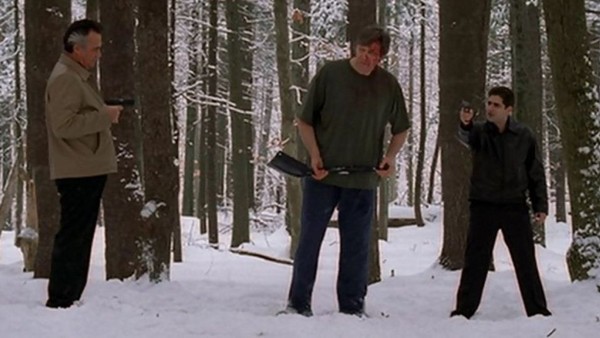
We didn’t sit there all serious, it was just part of the job. For every episode, including ones that were serious or sad. A standout exchange comes halfway through the episode, when, over a dodgy phone line, Tony tells Paulie that the guy they lost had killed Chechens and “worked for the interior ministry”, with Paulie interpreting it as “a Czechoslovakian… he’s an interior decorator!”.ĭC: In our writers’ room, there was always a lot of laughing and joking. The writers knew they had struck gold when they decided to place these two morons with short fuses in such a perilous situation. “I think what I was feeling then was the more you answer, the more questions that are gonna be raised,” he tells GQ over the phone, looking back. But Chase has remained consistent in his messaging for 20 years now: it doesn’t matter and it never did. What happened to the Russian? Fans would grill creator David Chase and the show’s writing team at every opportunity. It would become one of the show’s great unresolved mysteries. Though Tony Soprano (James Gandolfini) and Bobby Baccalieri (Steve Schirripa) eventually saved the two freezing idiots – the former plucked from a flaming row with his mistress, Gloria, the latter dressed in ridiculous hunting gear – the towering Russian, who escaped despite Chris shooting him in the head, never resurfaced. It’s an absurd proposition, but stranger things had happened on The Sopranos. When Christopher begins to wonder if Paulie is going to kill and eat him while he slept, the audience can’t help but also question whether he would be capable of it, too. But it nevertheless encapsulated the spirit of the show’s trademark dark humour, with Paulie and Christopher epitomising the dichotomy of the typical Jersey gangsters that the show satirised, who were at once silly and terrifying. For the most part, it stewed joyously in the tension between two of the show’s most hot-headed and petty characters as day turned to night and they began to think they might not make it out of the snow-covered expanse at all. In fact, it barely moved the plot forward at all. Nothing monumental happened in “Pine Barrens”. It was a simple story, pitched on a whim by one of the show’s most-decorated directors, Tim Van Patten, based on a dream he had: Christopher Moltisanti (Michael Imperioli) and Paulie “Walnuts” Gaultieri (Tony Sirico) take a mope out to the Pine Barrens (a vast woodlands south of New Jersey) in the dead of winter to whack him, only to lose him along with their bearings.

“Pine Barrens”, AKA the one with the unkillable Russian, arrived deep into The Sopranos’ third series, just as it was beginning to hit its peak, in both creativity and popularity. Visit Insider's homepage for more stories.Twenty years ago today, two assholes got lost in the woods, and the greatest ever hour of television was born.Here are some of those legends that locals shared with Insider. Stories of the powerful, the disenfranchised, the natural, and the famous beings that made up this community are passed on thanks to the hard work and passion of those who live there now.The buildings and railroad slowly disappeared over the decades, but the stories have lived on. The forest soon began to reclaim the land that was once an engine of productivity. By 1869, the iron industry in the Pine Barrens had disappeared, and the once-bustling towns there fell into decay.The most famous story is that of the Jersey Devil, a mythical beast born to a woman living in the Pine Barrens, which has reportedly haunted the region for hundreds of years.Take the story of John Bacon, for example: a Loyalist guerrilla who massacred 19 men of the Continental Army in their sleep and was then captured in the Pine Barrens in what is considered the last battle of the Revolutionary War. Many think of the American West when they hear of outlaws and ghost towns, but the Pine Barrens were just as wild.When the first iron furnace was opened, the area became instrumental in producing munitions during the War of 1812 and the American Revolution. Dutch and Swedish colonizers moved to the area to use the cedar and oak for shipbuilding.



 0 kommentar(er)
0 kommentar(er)
